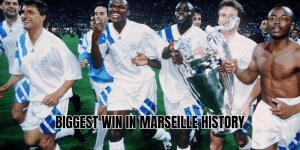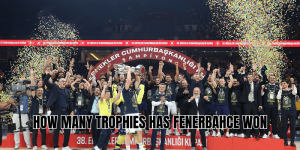From the moment you hear “Nerazzurri,” a vivid image of deep blue and jet black stripes flashes in the mind of any football fan. But why is Inter Milan nicknamed Nerazzurri? Beyond a simple descriptive tag, it is a name filled with history, symbolism, identity, and rivalry. In this article, QuraGoal will take you on a journey through the colors, the founders, and the myths behind Inter’s proud moniker — while unwrapping layers few fans pause to consider.
The literal meaning: black and blue
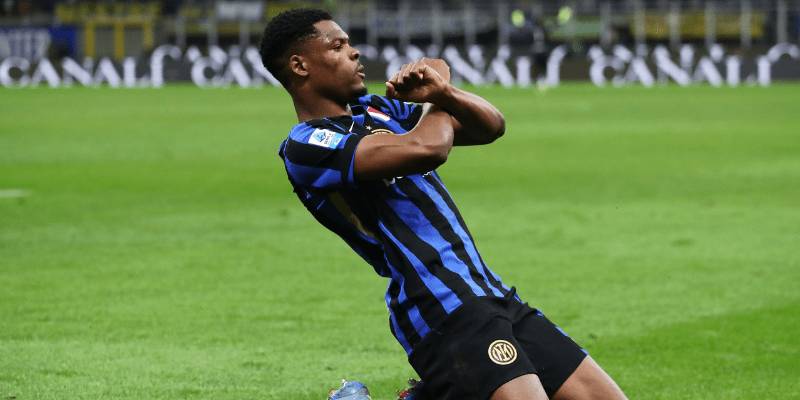
The nickname Nerazzurri comes directly from two Italian words: nero (black) and azzurro (blue). Thus, Nerazzurri translates roughly as “the black and blues” (or “the black-and-blues”). The club’s co-founder and graphic artist Giorgio Muggiani had a hand in choosing the club’s emblem and color scheme at foundation in 1908. His idea was to evoke the depth of the night sky — a poetic gesture that imbued those stripes with emotional weight. Over time, that poetic spark sanctified the colors as a banner for the club’s ethos, and fans embraced the nickname as a badge of pride.
So, at its core, the nickname is a straightforward reflection — the team that wears black and blue becomes “Nerazzurri.” Yet, as we dive deeper, we’ll see how it connects with Inter’s origins, rivalries, symbolic language, and identity.
How the colors became identity
Founding breakaway and symbolic opposition
Inter was founded in March 1908 by dissenting members of Milan Cricket and Football Club (the club that would become AC Milan). The split was reportedly motivated by a disagreement over foreign players; the Milan board wanted to restrict them, while the dissidents wanted openness and international spirit. That is the root behind the name Internazionale.
In that context, choosing colors had extra resonance. The black and blue were in direct symbolic contrast to Milan’s red and black (the “Rossoneri”). Legend has it that Muggiani purposefully selected blue as a counterpoint — perhaps as a nod to the alternative pencil tip (blue vs red) — rejecting the red that symbolized Milan. This set up a visual and philosophical identity distinct, the colors were more than decoration — they were a statement of values and defiance.
The early emblem, badge, and color consistency
Giorgio Muggiani’s original logo incorporated the letters “FCIM” within concentric circles, using the black and blue motif. The design philosophy has persisted through many updates — though the badge style has evolved, the core color harmony remains intact.
Through the decades, Inter rarely deviated from black-and-blue stripes. Those stripes became emblematic, forming a visual shorthand: see black & blue, think Inter. That consistent kit identity cemented the nickname Nerazzurri among supporters, commentators, and rivals.
Symbolism, mythology, and cultural weight
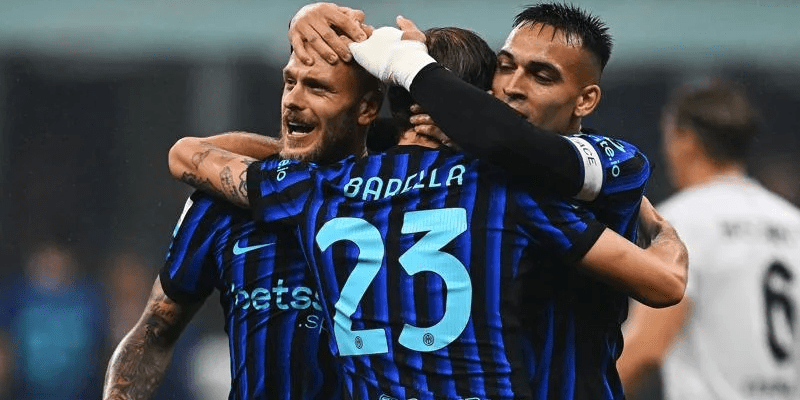
Beyond kits: the symbols in badge and city
The nickname Nerazzurri doesn’t live in a vacuum. Inter also adopted Il Biscione as a symbol drawn from Milan’s heraldry and the legacy of the Sforza family. The snake appears in several badge versions and is another cultural anchor for fans, linking the colors with dee.
This pairing — the black/blue stripes and the serpent — enriches identity. The nickname Nerazzurri signals “we are the black and blue club,” but associated symbols add drama, mythology, and rootedness in Milan’s history.
Rivalry amplification: Nerazzurri vs Rossoneri
In Milan’s football tapestry, colors define allegiances as vividly as trophies. AC Milan’s red and black fans are called Rossoneri (red-blacks). Thus, on derby day, you don’t just hear another nickname — you see a clash of identities: Nerazzurri vs Rossoneri, black and blue vs red and black.
The nickname takes on extra emotional weight in that rivalry context. To be “Nerazzurri” is not just to wear black and blue — it is affirmation, in opposition, of belonging to that distinct lineage in Milan.
From fans to identity: “interisti,” “nerazzurri,” and class labels
In different eras, fans were addressed by both interisti (Inter supporters) and Nerazzurri as collective identity labels. Some analysts say that in earlier times, Inter fans were seen as more bourgeois, better-to-do, compared to working-class Milan supporters — leading to rumors that they were called “Bauscia” (a Milanese term meaning “braggart”) in local dialect. That historical nuance shows how nickname and identity can be wrapped in social and cultural perceptions beyond the pitch.
Why the nickname persists and matters today
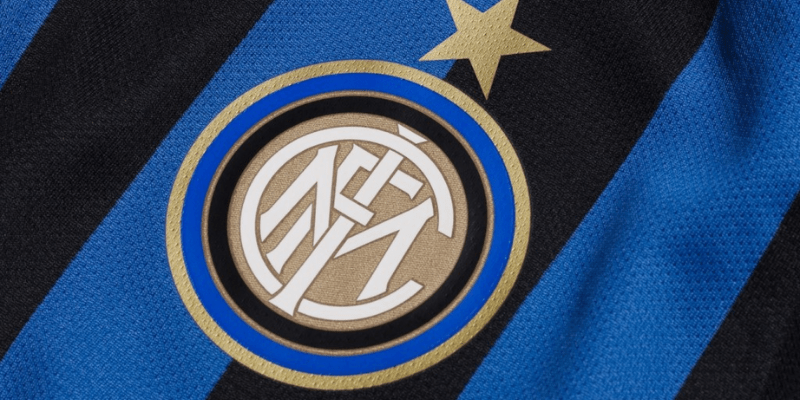
Longevity and continuity
Over more than a century, Nerazzurri has remained the primary nickname for Inter Milan. While other monikers exist — “La Beneamata” (the well-loved one), “Il Biscione” (the serpent) — no other name rivals Nerazzurri in everyday recognition. Its persistence testifies to how deeply the black-blue identity is ingrained in the club’s culture.
Moreover, the club itself uses it in its own communications (e.g. describing their “Nerazzurri history,” “our Nerazzurri fans,” etc.). That institutional endorsement ensures the nickname continues to be the default descriptor.
Emotional resonance with new generations
For younger fans, Nerazzurri is more than a historical footnote — it’s banner, chant, badge. In matchday chants, social media, merchandising, and branding, the nickname infuses the modern narrative. It connects fans to a lineage, making every generation part of an ongoing story of black and blue heritage.
In tournaments, when match reports or commentators call Inter “the Nerazzurri,” they evoke more than identity: they invoke legacy, tradition, triumph, and the dramatic contrast to rivals.
Common misconceptions and alternate nicknames
Misconception: Nerazzurri is just a generic “black & blue” club name
While Nerazzurri literally means “black and blues,” it is not a generic moniker: it belongs exclusively to Inter (and some lesser clubs with similar colors). The nickname is deeply tied to Inter’s founding, symbolism, and identity — not just the visible colors.
Alternate nicknames
- La Beneamata – meaning “the well-beloved one.” A poetic name used affectionately by supporters and in media.
- Il Biscione – “the big snake.” As mentioned earlier, tied into Milanese heraldry and the Sforza family crest.
- Interisti – simply “the Inter supporters.” Used as a collective descriptor.
Yet none of these alternatives replace Nerazzurri in the popular lexicon. It remains the most recognized, SEO-friendly, and emotionally loaded term for the club.
Conclusion
Why is Inter Milan nicknamed Nerazzurri? Because the name captures — in two syllables — the soul of the club: black and blue, chosen with purpose; a distinct identity forged at foundation; a defiant opposition to rival colors; and a symbolic language built with legendary continuity. Over time, it evolved, legend — the way fans call themselves and how rivals refer to them.
For any football fan wanting to understand Inter’s identity, history, rivalry, and emotional resonance, Nerazzurri is not just a nickname — it is the essence of the club’s narrative.
If you’re curious to dive deeper into Inter’s legendary eras, rival stories, or star players who embodied the Nerazzurri spirit (like Javier Zanetti, Giuseppe Meazza, or modern icons), let me know — QuraGoal is ready to walk you through it.





